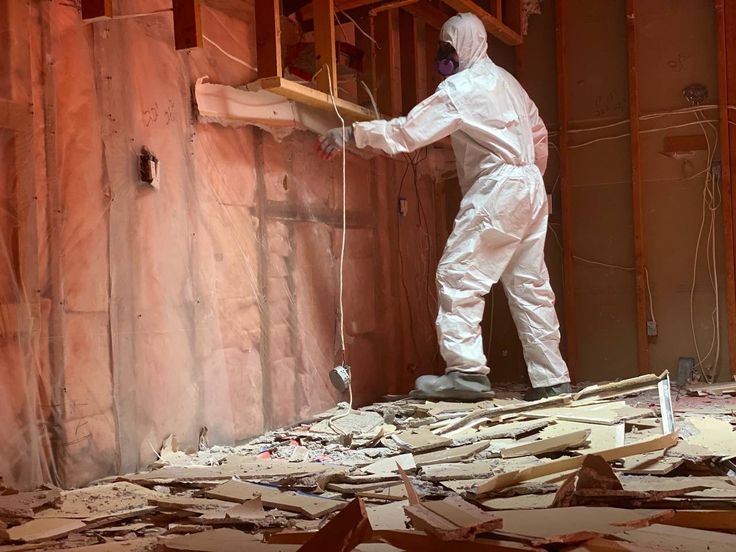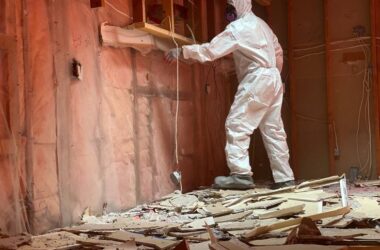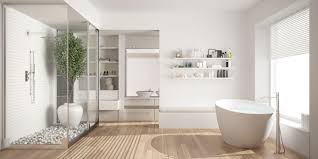Moisture is one of the biggest enemies of flooring. In places like bathrooms, kitchens, basements, and laundry rooms, excess water can seep into the wrong material and cause warping, swelling, or even mold. For homeowners, choosing the right flooring isn’t just about style—it’s about protecting their home. In a city like Austin, where humid weather and unexpected leaks can happen, the right floor choice can also save money on future repairs. Some even turn to water damage restoration Austin after flooring fails to hold up against moisture. That’s why it’s important to think carefully before making a decision.
Why Moisture-resistant Flooring Matters
When flooring absorbs water, it weakens. Wood planks may buckle, carpets can trap mold, and laminate can peel apart. High-moisture areas need flooring that can resist spills, humidity, and occasional flooding. Beyond function, it’s also about safety. Damp floors can make mold growth more likely, and mold not only damages property but also affects indoor air quality.
Tile: A Reliable Classic
Ceramic and porcelain tiles remain one of the best choices for wet environments. They are dense, waterproof, and available in endless designs. Many homeowners choose them for bathrooms, showers, and laundry rooms because they stand up to water without losing strength.
Porcelain tiles, in particular, absorb less water than ceramic, making them ideal for high-moisture areas. With proper installation and grout sealing, tile floors can last for decades with minimal issues. The only drawback is that they can feel cold and slippery, but textured finishes or rugs can help balance that out.
Vinyl Flooring: Practical and Affordable
Modern vinyl flooring has come a long way. It’s available in sheets, tiles, or planks, and many designs mimic the look of wood or stone. Luxury vinyl planks (LVP) are especially popular because they are durable, waterproof, and softer underfoot than tile.
Vinyl is also budget-friendly compared to natural materials. It handles spills well and is easy to clean, making it a great option for families with kids or pets. The key is choosing waterproof vinyl, not just water-resistant, as the two labels can mean different levels of protection.
Concrete: Durable and Stylish
Concrete is not just for garages anymore. In modern homes, polished and stained concrete floors are used in kitchens, basements, and even bathrooms. Its natural resistance to moisture makes it an excellent option for areas that deal with humidity or water leaks.
Beyond practicality, concrete can be finished in multiple ways. Polishing, staining, or adding textures can create a high-end look while still being highly functional. With proper sealing, it becomes nearly impervious to water and stains.
Natural Stone: Timeless but Demanding
Stone floors like slate, granite, or marble bring elegance to any space. They are naturally dense and can resist water when properly sealed. Slate, in particular, is popular in bathrooms and entryways due to its slip resistance.
The downside is maintenance. Natural stone requires sealing to prevent moisture from seeping into pores. Without care, it may stain or weaken over time. The cost is also higher than most other options, but for homeowners who want a blend of beauty and resilience, it can be a worthwhile investment.
Engineered Wood: A Safer Wood Alternative
While solid hardwood should be avoided in wet areas, engineered wood offers a middle ground. It has a plywood base with a hardwood veneer, making it more stable when exposed to moisture.
Although it’s not fully waterproof, engineered wood performs better than traditional wood flooring in kitchens or half-baths. It gives the warm, natural look of hardwood without the same level of risk. Still, spills should be wiped up quickly to prevent damage.
Rubber Flooring: Functional and Comfortable
Rubber flooring isn’t common in traditional homes, but it’s a smart choice for laundry rooms, basements, or workout spaces. It’s water-resistant, slip-resistant, and soft underfoot, making it practical for areas where people stand for long periods.
Rubber tiles or rolls are also easy to install and replace if damaged. While not the most stylish option, its practicality makes it worth considering in specific high-moisture zones.
Choosing Based on Lifestyle
The “best” flooring depends on how the space is used. For example:
- Families with kids may prefer vinyl for easy cleaning.
- Homeowners wanting a luxury look may lean toward stone or tile.
- Those converting basements may choose concrete or rubber for durability.
Moisture resistance should always come first, but style, comfort, and budget should also guide the choice.
Frequently Asked Questions
1. Can hardwood ever work in high-moisture areas?
Solid hardwood is risky, but engineered wood can work in lightly damp areas like kitchens if maintained properly.
2. Do I need to seal tile floors?
The tiles themselves are water-resistant, but grout lines are not. Sealing grout helps prevent water penetration and staining.
3. Is vinyl really waterproof?
Luxury vinyl planks (LVP) and sheets can be waterproof, but always check product details. Some cheaper versions may only be water-resistant.
4. How do I prevent mold under flooring?
Proper installation, moisture barriers, and sealing are key. Quick cleanup of spills and good ventilation also help reduce mold risks.
5. Which flooring is best for basements?
Concrete and vinyl are usually the safest choices since basements are prone to higher humidity and occasional flooding.
Final Thoughts
High-moisture areas require flooring that can handle water without losing performance. Options like tile, vinyl, concrete, and natural stone each bring unique benefits. The right choice depends on lifestyle, design preferences, and budget. By weighing durability against style, homeowners can avoid costly replacements and enjoy floors that last for years.
And while flooring can resist moisture, no material is completely immune to water damage. When leaks or floods happen, professional help may be needed. That’s why services like Mold Removal Services in Texas are essential to keep homes safe and comfortable long after the installation is complete.










